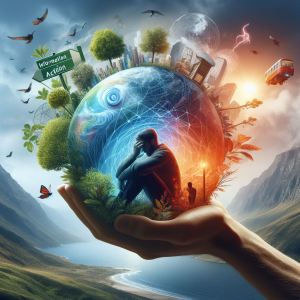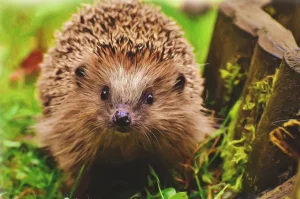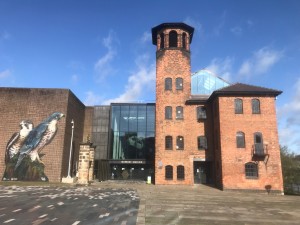When close to someone it is natural to worry when they are unwell. So, it makes sense that people who are closer to nature are worried about biodiversity loss and climate change. Given one benefit of increasing nature connection is mental wellbeing, this could appear to be a conundrum. If we love, we care. If we care, we worry. And worry can lead to distress. It is important to understand these relationships.
There’s growing interest in both climate anxiety and nature connection, but they also need to be considered together. A few studies have started to do this and untangle the relationships. Thomson and Roach (2023) did indeed find a relationship between nature connection and climate worry. And between climate worry and psychological distress. They also found that nature connection was linked to both individual and collective climate action.
Similarly, Curll et al (2022) found a link between nature connection and climate anxiety, which was associated with psychological distress. Wullenkord et al (2024) have also found nature connection to be a risk factor in climate anxiety. This suggests a troubling paradox, to address climate change there is a need for action, which can be promoted through nature connection, but that could well increase climate anxiety – although nature connection also brings mental wellbeing benefits.
However, Thomson and Roach (2023) also found climate knowledge played a role in these relationships, and Whitmarsh et al. (2022) have studied this further. They found widespread climate worry, but far lower levels of climate anxiety, an important distinction. They found the strongest predictor of climate anxiety was climate information seeking behaviour. Environmental information seeking behaviour is related to risk and associated with climate anxiety. Reese et al. (2023) combined some of these aspects, finding that higher risk perception, but not nature connectedness, predicts climate anxiety. Climate anxiety revolves around notions of threat.
Curll et al also found that taking individual climate action was related to reduced psychological distress, although collective action had the opposite effect, perhaps via increasing information and risk perception depending on the tone of the collective action.
Taken together, the results suggest that seeking to improve nature connection may well be less problematic for increasing psychological distress than might first appear. This work also suggests the importance of giving people the opportunity and agency to take action, one of the pathways to nature connection. There is a need to focus on solutions and positive action, rather than fear and threat. Focussing on threat engages people, but at a cost. Further, the climate narrative can often appear as a life without, through less travel for example. The narrative of a new relationship with nature is about living with, such that people and the more than human world flourish together.
You find out more on creating a new relationship with nature in our nature connection handbook, connected organisations handbook, policy briefing, Silk Mill vision and my book Reconnection.
Thomson, E. E., & Roach, S. P. (2023). The relationships among nature connectedness, climate anxiety, climate action, climate knowledge, and mental health. Frontiers in Psychology, 14, 1241400.
Reese, G., Rueff, M., & Wullenkord, M. C. (2023). No risk, no fun… ctioning? Perceived climate risks, but not nature connectedness or self-efficacy predict climate anxiety. Frontiers in Climate, 5, 1158451.
Whitmarsh, L., Player, L., Jiongco, A., James, M., Williams, M., Marks, E., & Kennedy-Williams, P. (2022). Climate anxiety: What predicts it and how is it related to climate action?. Journal of Environmental Psychology, 83, 101866.
Wullenkord, M. C., Johansson, M., Loy, L. S., Menzel, C., & Reese, G. (2024). Go out or stress out? Exploring nature connectedness and cumulative stress as resilience and vulnerability factors in different manifestations of climate anxiety. Journal of Environmental Psychology, 102278.
Curll, S. L., Stanley, S. K., Brown, P. M., & O’Brien, L. V. (2022). Nature connectedness in the climate change context: Implications for climate action and mental health. Translational Issues in Psychological Science, 8(4), 448–460. https://doi.org/10.1037/tps0000329
Lutz, P. K., Passmore, H. A., Howell, A. J., Zelenski, J. M., Yang, Y., & Richardson, M. (2023). The continuum of eco-anxiety responses: A preliminary investigation of its nomological network. Collabra: Psychology, 9(1), 67838.









